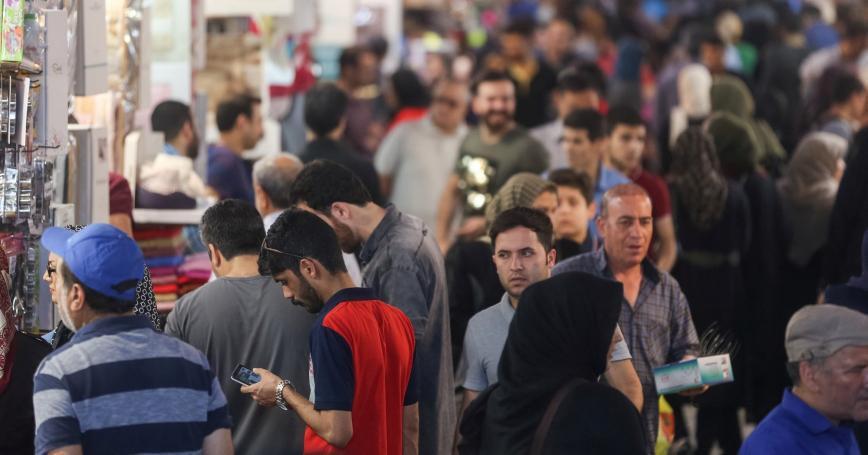Amidst the turmoil of Iran’s economic crisis, the government’s recent move to raise the minimum wage has been met with skepticism by independent labor organizations. As the poverty line in the country reaches nearly 8 million tomans (fluctuating between 150 and 155 euros) per month, and the poverty index surpasses 50%, the minimum wage has been increased to just a little over 5 million tomans (between 100 and 105 euros) per month.
Continuing its neoliberal policies, the Ebrahim Raisi administration highlights the government’s willingness to put the burden of capitalist crisis, the economic bankruptcy of the Islamic regime, and the losses incurred due to its military policies, including sanctions on the shoulder of the people. While the government claims to be impervious to the effects of economic sanctions, millions of Iranian families are facing increasing poverty and misery, exacerbated by the government’s continued attacks on the living standards of the working class. It is worth noting that despite these economic struggles, the government’s budget bill for the current year has seen a significant increase in funding for repressive organs such as the IRGC, the Ministry of Intelligence, and the Police, with their budget more than doubling.
What’s more concerning is that independent labor organizations in Iran are severely suppressed, and labor activists face long prison sentences. The government holds meetings to determine the minimum wage with representatives of the members of the Islamic Labor Council, which has been established to prevent workers from forming independent organizations. Independent worker organizations, such as the Tehran Bus Workers’ Union, do not recognize these councils, as they consider them to be government and capitalist representatives.
Iran Pensioners Council wrote in a statement that the announced salary by the state is a mass killing order for more plunder, in fact, by cheapening labor, they reduced the entire standard of living, including health, welfare, right to life, joy and hope to complete their murders with the laws of hunger.
In a situation where various reports of poverty and unemployment are published by government officials and media, social activists, workers and teachers are generally imprisoned for pursuing these issues. Dozens of labor activists and teachers are currently in prison on charges such as propaganda against the regime.
Last summer, the Ministry of Agriculture estimated that a family of 4 in Iran would require over 17 million tomans (between 130 and 140 euros) per month to meet their minimum food and clothing needs. This figure has increased after just 6 months, placing an enormous burden on low-wage workers and their families. The report of the Ministry of Agriculture says that items such as meat and fish have practically been removed from the food chain of the majority of Iranian people. This report says that the cost of a family of 3 in Iran is 63% more than its income.
In the past year, hundreds of labor protests and strikes were held in Iran due to low wages or non-payment of wages. The continuous delay in the payment of wages also adds to the problems in Iran. Some teachers and employees of the Ministry of Education say that after a few days have passed since the beginning of the new year in the Iranian calendar, their demands for the previous month have not been fully paid.
In light of these developments, it’s clear that the government’s move to raise the minimum wage is not enough to address the economic crisis, and is perhaps a mere political gesture. Instead, there needs to be a comprehensive overhaul of the system, where workers have the right to form independent organizations and negotiate their wages and benefits. Until then, the struggle for workers’ rights in Iran will continue to be an uphill battle.
In a recent report, the Iran Labor News Agency delved into the economic developments discussed at the Iran Academy of Sciences. Based on the information announced at the event, the report revealed that over 25 million people in Iran are living below the poverty line. The situation is particularly dire for young people, with 30% of those aged 18 to 24 dropping out of school due to financial hardship before completing high school.
The latest report of the Research Center of the Islamic Consultative Assembly says that 60% of the country’s workers are not covered by insurance. This institution also says that 89% of Iran’s poor are former (unemployed and retired) and current workers.
These figures paint a bleak picture of the economic reality in Iran, where a large portion of the population is struggling to make ends meet. The government’s efforts to address the issue, including a recent increase in the minimum wage, have been met with skepticism by independent labor organizations. Moreover, the suppression of such organizations and labor activists has only exacerbated the problem.










